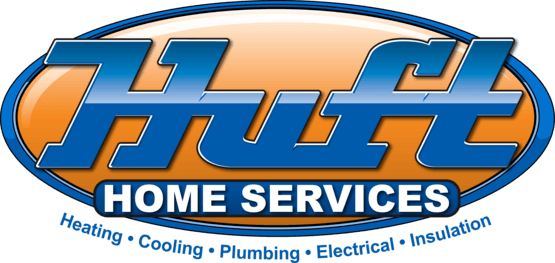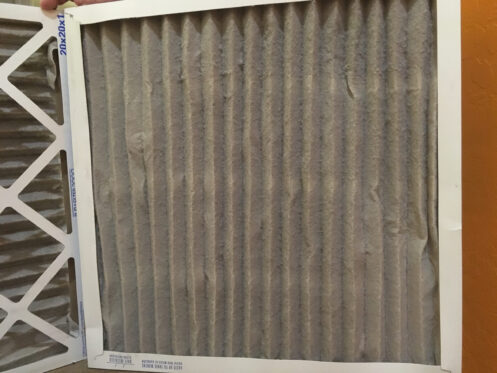If you or someone you care about suffers from asthma or allergies, taking good care of your HVAC equipment is important. The heating and cooling system in your Sacramento, CA home can have as much of an impact on their respiratory health as any other factor. Dirty HVAC ductwork and under-performing air filters can leave your living space riddled with airborne debris that exacerbates these issues. Read on to discover eight ways to eliminate allergens and other triggers from your indoor air so that building residents experience fewer episodes and less severe symptoms.
1. Upgrade Your HVAC Air Filter
Keeping your HVAC air filter clean is an easy way to protect your home’s indoor air quality (IAQ). However, the standard air filters that come with new heating and cooling equipment are largely intended to protect heaters and air conditioners themselves, not humans. These filters keep dust, hair, and other contaminants from coating AC condenser coils and other sensitive interior components. Unfortunately, many common allergens pass right through them.
To keep allergy attacks and asthmatic episodes to a minimum, invest in a higher rated air filter that’s capable of capturing and retaining a greater number of particulates. All HVAC air filters come with maximum efficiency reporting value (MERV) ratings. Filters with MERV ratings of six can pick up lint, dust, and pollen, but your HVAC air filter will need a MERV rating of at least eight to pick up dust mites and mold spores.
If smoke, pet dander, or outdoor smog are concerns for your household, consider investing in an HVAC air filter with a MERV rating of 11 or higher. You can get superior air filtration from a true high-efficiency particulate air (HEPA) filter, but slight modifications to your ducting and heating and cooling equipment could be required for installing one. Whether standard or upgraded, your HVAC air filters should be checked every 30 days and changed every 30 to 90 days.
2. Clean Your Air Registers, Vents, and Grilles
If your air registers, vents, or grilles are dirty, the air that’s flowing out of them is dirty too. Wipe these features down with a damp cloth to remove built-up debris at their exterior. You can take air vent covers off using a screwdriver. Once they’re removed, you can clean behind them using your vacuum cleaner’s hose and attachments. This is an ongoing maintenance task that can be handled at the same time as your HVAC air filter changes.
3. Tighten Your Home Envelope
Many of the allergens and contaminants that affect your home’s IAQ are lifestyle-related or related to your home furnishings and general building materials. For instance, unsealed particle board, paint, and the adhesives that are commonly used in flooring and furnishings constantly off-gas chemicals. Cooking, burning candles, and using certain household cleaners also add contaminants to your indoor air. However, if your home is poorly sealed, you likely have a number of allergens and contaminants that slip into your living space via cracks and gaps in building materials. This inflow of unfiltered air is known as induction. Use caulk and weatherstripping to keep outdoor contaminants out and to limit the amount of work that your HVAC air filter must do.
4. Seal Your HVAC Air Ducts
If you have torn HVAC air ducts or older air ducts that are unsealed, unfiltered air could be seeping into your system and impacting your IAQ. This air and all of the contaminants that it contains will be distributed throughout your home without ever being passed through your HVAC air filter. Paying for duct sealing services will boost your IAQ and reduce your home energy bill. By minimizing stress on your HVAC equipment, duct sealing can also make your heater and air conditioner last a lot longer.
5. Have Your HVAC Air Ducts Professionally Cleaned
It’s important to have your HVAC air ducts inspected annually. This will ensure that rips, tears, and other structural damages are addressed before they’re able to have a significant and potentially long-lasting impact on your IAQ. Your HVAC air ducts should also be professionally cleaned. In most households, this only needs to be done about once every three to five years. In homes where residents have allergies, asthma, or any other respiratory conditions, HVAC air ducts should be professionally cleaned every one to two years instead.
6. Stay on Top of HVAC Replacements
Taking good care of your HVAC equipment can go a long way towards improving your IAQ. However, over time, even your most diligent efforts in this area won’t have much impact. Air conditioners and furnaces should be replaced about once every 15 to 20 years. HVAC air ducts should be replaced every 10 to 15 years. Even if your HVAC equipment continues working beyond its expected lifespan, it will have sustained substantial losses in efficiency, and it may have an increasingly negative impact on your IAQ.
7. Install Humidification/Dehumidification Equipment
Central HVAC systems provide temperature control, limited air filtration, and ongoing humidity regulation. When they’re properly installed and regularly maintained, they’ll perform well in all three of these areas, and they may be sufficient for meeting the needs of your household. In homes with lots of residents, poor ventilation, and other factors that impact indoor moisture levels, additional humidity regulation is often needed.
Overly dry indoor air can wreak havoc on issues like allergies and asthma. Dry air can can trigger asthma flare-ups, irritate the throat and nasal passages, and cause frequent nosebleeds. Excessively moist indoor air can cause problems too. Excess moisture inside of your home creates the perfect conditions for mildew and mold development. To ensure adequate humidity regulation, consider investing in whole-house humidification or dehumidification equipment.
8. Review Your Options Integrated IAQ Accessories
Often referred to as integrated IAQ accessories or integrated HVAC accessories, additions like media filters, air scrubbers, and air purifiers may be essential for residents with compromised immunity, chronic respiratory conditions, or terminal illnesses like cancer or congestive heart failure. These HVAC additions are installed directly in air ducts or connected to them. They remove pathogens, allergens, and other airborne contaminants that even high-rated HVAC air filters cannot. Moreover, unlike filters, these accessories actually clean the indoor air rather than simply sifting particulates out. As such, they can even remove the germs that are found in the tiny aerosols from a sneeze.
Integrated IAQ accessories extend the lifespans of heaters and air conditioners and greatly decrease the likelihood of major repair issues. Thus, they provide another important benefit for homeowners seeking to protect family members who are especially vulnerable to airborne contaminants. These additions improve the functioning of heating and cooling equipment. With enhanced particulate removal, HVAC systems become both more effective and more efficient. As a result, residents are less likely to experience fluctuating temperatures or fluctuations in indoor humidity. Given the decreased risk of early heater or air conditioner failure, they’re also less likely to find themselves stuck without functioning HVAC equipment.
Since 2004, we’ve been proudly serving residents of Sacramento, California and the surrounding communities. We provide heater, heat pump, air conditioner, and ductless AC installation, maintenance, and repair services. We also offer plumbing, electrical, and indoor air quality services. If you need help optimizing your HVAC system for residents with allergies or asthma, we’ve got you covered. Call Huft Home Services today to schedule an appointment!




